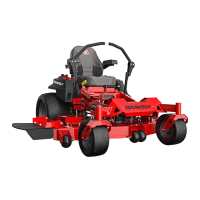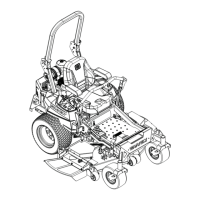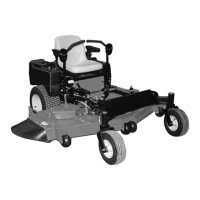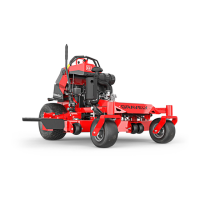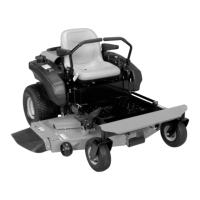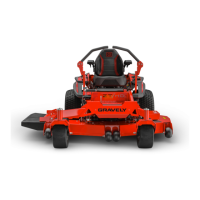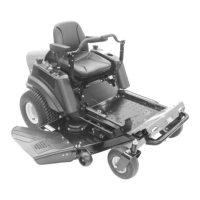GB - 10
NEVER fill containers inside a vehicle or on a
truck or tra
iler bed with a plastic liner. Always
place containers on the ground away from
your vehicle before filling.
When practical, remove gas-powered
equipment fro
m the truck or trailer and refuel
it on the ground. If this is not possible, then
refuel such equipment on a trailer with a
portable container, rather than from a
gasoline dispenser nozzle.
Keep the nozzle in contact with the rim of the
fuel t
ank or container opening at all times until
fueling is complete. Do not use a nozzle lock-
open device.
If fuel is spilled on clothing, change
clothing
immediately.
Avoid Electric Shock. Objects contacting both
batter
y terminals at the same time may result
in injury and unit damage. DO NOT reverse
battery connections.
Explosive Gases from batter
y can cause
death or serious injury. Poisonous battery
fluid contains sulfuric acid and its contact with
skin, eyes or clothing can cause severe
chemical burns.
NO flames, NO sparks, NO smoking near
battery
.
ALWAYS wear safety glasses and protective
gear n
ear battery. Use insulated tools.
Battery posts, terminals and related
accesso
ries contain lead and lead
compounds, chemicals known to the State of
California to cause cancer and reproductive
harm. Wash hands after handling.
ALWAYS keep batteries out of reach of
ch
ildren.
Reverse connections may result in sparks
which can cause serious injury
. Always
connect positive (+) lead of charger to
positive (+) terminal, and negative (-) lead to
negative (-) terminal.
ALWAYS disconnect negative (-) cable FIRST
and positive (+)
cable SECOND. ALWAYS
connect positive (+) cable FIRST, and
negative (-) cable SECOND.
A frozen battery can explode and result in
death or
serious injury. DO NOT charge or
jump start a battery containing frozen fluid.
Thaw the battery before putting on a charger
or jump starting.
ALWAYS keep protective structures, guards,
and p
anels in good repair, in place and
securely fastened. NEVER modify or remove
safety devices.
DO NOT change engine governor settings or
over-speed engin
e.
Fumes from engine exhaust can cause injury
or death
. DO NOT run engine in an enclosed
area. Always provide good
ventilation.ALWAYS maintain unit in safe
operating condition. Damaged or worn out
muffler can cause fire or explosion.
Stop and inspect equipment if you strike an
object o
r if there is an unusual vibration.
Repair, if necessary, before restarting. Never
make adjustments or repairs with the engine
running.
Mower blades are sharp and can cut you.
W
rap the blade(s) or wear gloves, and use
extra caution when servicing them. NEVER
weld or straighten mower blades.
Rotation of one blade may cause rotation of
the othe
r blades.
Check brake operation frequently. Adjust and
service as required
.
Keep all hardware properly tightened.
Stored energy in springs can cause injury.
Maintain or replace safety and instruction
la
bels, as necessary.
Never store the machine or fuel container
in
side a building where there is an open
flame, such as a water heater.
Shut off fuel (if provided) and allow engine to
cool completely bef
ore storing in closed area
or covering unit.
Clean grass and debris from unit, especially
from a
round muffler and engine, to help
prevent fires.
For extended storage, clean unit thoroughly.
See Engine Manual for
proper storage.
Use only attachments or accessories
designe
d for your unit.
Check attachment components frequently. If
wor
n or damaged, replace with
manufacturer’s recommended parts.
Tools Required
• Adjustable wrench
• 9/16" wrench
• Petroleum jelly or dielectric grease.
Unpack Unit
Remove unit and all other components from
the shipping container. Engage transmission
bypass lever (see MOVING UNIT
MANUALLY on p
age 16). Push unit from
container onto a level surface. Disengage
t
ransmission bypass lever.
ASSEMBLY
WARNING: AVOID INJURY.
Read and understand the entire
Safety section before proceeding.

